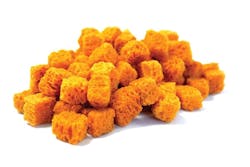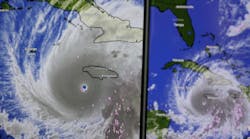Study Examines Metals Removal in Shipyard Runoff
The National Shipbuilding Research Program recently conducted a study titled, “Removal of Metals from Shipyard Stormwater Runoff.” Shipyards participating in the study included Huntington Ingalls Inc. – Ingalls Shipbuilding Div., Pascagoula Operations, BAE Systems, Mobile Shipyard, and Vigor Industrial and Marine. The goal of the project was to provide interested shipbuilding members with a contaminant control removal system that has substantially lower operating and maintenance costs and requires less technical expertise than traditional multi-stage filtration systems.
Each heavily contaminated site performed a pre-control water test to determine the pH of the water, as well as effluent concentrations of zinc, copper and total suspended solids in the water samples. Each site selected a storm water solution to install and then did a post-study evaluation of the water up-gradient and down-gradient of the treatment solution to determine the ability of various adsorbent materials to decrease contaminant concentrations in storm water runoff, investigate overall removal efficiency over time, and determine the most effective control technology based on results and cost.
At its test site, CleanWay installed column filters, 6-ft absorbent booms and a final flow-through chamber. MetalZorb sponge media was used as the contaminant removal material. The technology consists of an open-celled cellulose sponge that contains a water-insoluble polyamide-chelating polymer for the selective removal of heavy metals. Sponges have a high affinity for heavy metals (i.e., Cd, Cu, Zn, Fe, Au, etc.) and a low affinity for more common aqueous constituents.
The solution was installed at a test site with a number of geographic challenges. Because the water conveyance trenches were on downhill slopes, water flowed quickly and required a way to control the flow to help absorb contaminants. CleanWay designed a system using the sponge media in absorption booms with weighted compartments that could be shaped to fit the rainwater conveyance trenches. The company created barriers within the booms, as shown in the diagram, to control the speed of the water running down the trench and to allow the water to have more contact time with the media near the end of the trench.
The study used three different additives for metal absorption. A simple mechanical filtration method also was tested that included filtration, sediment control, coconut husks and pine bark. MetalZorb showed the highest performing results in heavy metals removal. The amount of copper and zinc was reduced by 90% and non-targeted (Na+, K+, Ca+, Mg+) ions were near zero, preventing the media from quickly becoming saturated with non-target constituents.


